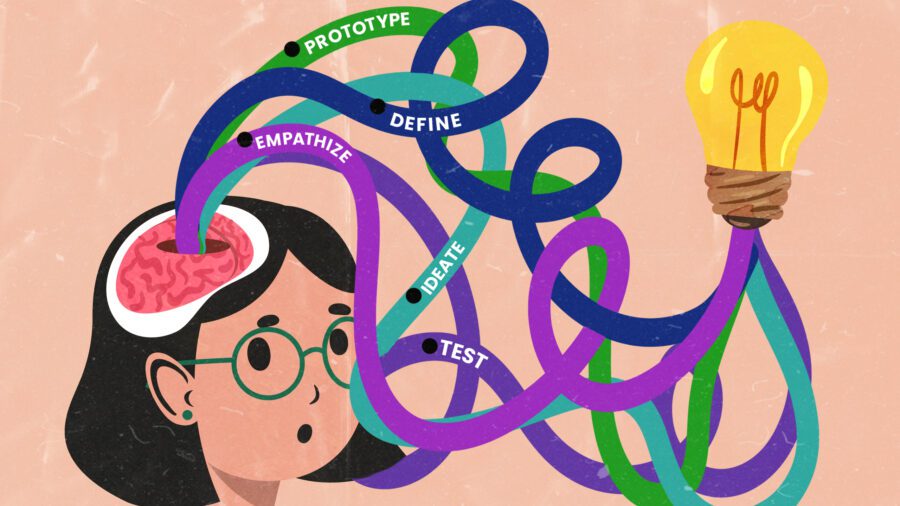
The First-Time Parent’s Guide to Make-Believe: How to Ignite Your Child’s Imagination
What do you do when your little one squeals, “Do you want to play?!!”
Maybe you’re thrilled to dive into pretend games, donning a tutu and breaking out the tea cups for your little girl at the opportunity to play make-believe.
Maybe you’re extra busy, and as much as you want to, you’re just too tired. That’s okay! Being a parent is tough and exhausting.
Or perhaps you want to play, but you just don’t know how. To you, make-believe feels silly and awkward, unnatural and uncomfortable.
The fact is, it’s in your baby’s best interest that you play with them. Playing and pretending aren’t just a ton of fun — they actually stimulate brain development.
In many ways, humans are built to play. Engaging the imagination has increasingly been associated with numerous critical aspects of development including empathy, problem-solving, creativity, social skills, and language.
Plus, all that teamwork and engagement help you create a secure attachment with your child, which is the foundation for self-love in later life.
Make-believe might feel a little strange at first, but do it a few times, and you’ll likely see how much fun it is. Plus, even adults need to have fun and be silly. What an amazing relief to dive back into a world of astronauts and tea parties when you’ve had it up to here with tax returns, traffic, and just general adulting.
Ready to get started? Let’s take a look at how you can ignite your child’s imagination and encourage healthy development.
Turn Off the T.V. (And Put Away the Devices)
Let’s address something right away — passively watching the T.V. or a computer screen is not the way to encourage imagination and play. While throwing on a show is sometimes an easy way to distract young kids as you tackle work or chores, it shouldn’t be a staple in your kids’ playtime or your parent-child bonding regimen.
Children need to be engaged and active, not passive, in order to create the neurological patterns and connections that facilitate their development. Our brains are incredibly plastic — meaning they grow and structure themselves according to behaviors and the environment. Young children are especially primed to learn through activity. Make the most of that valuable and precious time.
Tell Stories
Want to know what beats T.V. every time? Story time. This is one of the best activities you can do to boost language learning, social skills, empathy, and creativity.
Just think about it — your kids are listening to new words, sounds, and language structures. They’re learning about how other people think and feel. They’re observing ways that characters engage with each other and why. They’re considering new patterns, narratives, and ideas that they’ve never heard before.
You don’t have to be a word wizard to tell stories. You can read together to start off, maybe with a picture book to keep their interest. Keep them engaged by asking questions. You might ask them, “What do you think will happen next?” or “Why do you think the doggie did that?” Stimulate self-awareness and reflection by asking, “What would you do?” or “What do you think about that?”
Next, branch off into telling your own stories face to face instead of reading them out of a book. This is important because you want to make eye contact and let your little one see your facial expressions and body language. Not only does this help with forming secure attachment, but it also allows your child to read and respond to facial cues.
You can invite your child to change stories too, or even make up their own. Of course, this will help stimulate creative thinking, problem-solving, and imagination — all very important faculties.
Engage in Imaginative Play
Does your baby like to roar like a lion, buzz like a bee, or meow like a kitty? Don’t just sit there taking pictures. Join them!
Maybe she loves being an astronaut, a ballerina, or Alice from Alice in Wonderland. You can be another excited astronaut about to fly to the moon, her dance partner, or the quizzical Cheshire Cat.
Not only does playing pretend stimulate imagination, social skills, and emotional development, it’s generally active, which means you’re getting the benefit of motor skills and physical development too.
Encouraging play isn’t just about engaging with your kid. You can further encourage it by keeping props around to give your little one ample opportunities for engaging the imagination. Keep costumes, toys, dolls, puppets, and props around for their use.
Dressing up can be a ton of fun, and it will take imagination to a whole new level. Ask your little one, “What does a ballerina wear?” or “What does kitty look like?” Break out costumes, jewelry, and accessories — go all in.
Props stimulate imagination and help kids deal with real or pretend challenges. Maybe your son’s magic wand can help make the sad kitty feel all better. Maybe it’s also great for getting rid of ghosts under the bed.
Dolls and puppets are excellent tools to help kids work through some of their own ideas, thoughts, and feelings. For example, a puppet might be sad, two stuffed animals might be trying to figure out how to share toys, or a doll might be feeling happy — because that’s what’s going on for your kid.
There are absolutely endless benefits to imaginative play, so put on that tutu and start dancing.
Join In 200 Million+ On The Journey to Greatness
Value Art
In a culture and education system that values logic practically more than anything else, cultivating an artistic sensibility can set your kid up for a more well-rounded set of skills. Plus, making art is a fun way to help your child express ideas, thoughts, and feelings that they might not be able to verbalize yet.
What’s more, art will help your child’s brain development. Here are some of the ways it will benefit them:
- Motor skill development
- Memory
- Self-control and emotional control
- Visual-spatial processing
- Self-esteem and self-expression
- Creativity
- Problem-solving
To encourage artistic play, you’ll want to dive right in with your kids. Whether it’s sculpting shapes with play dough, mixing watercolors, scribbling with crayons, drawing, coloring, dressing up dolls, shaking rattles, or arranging decorative objects, there are endless ways to be artistic.
You can also combine art with any other activity to make it more enriching. For example, after reading together or telling a story, try drawing pictures of characters, making up a song about them, or acting out some of the things that happened. You can have a lot of fun with this, and it may even develop into a tradition in later life where all the kids get together to write and act out a play.
Don’t be afraid to get messy. Throw your inhibitions aside, and free your own inner child, too, as you let go of outcomes, expectations, or the need to be good at things. Have fun!
Spend Time in Nature
Nature is the ultimate source of inspiration, imagination, and creativity. Just look at how colorful, and creative nature is. Whether it’s a bright blue jay hopping from branch to branch, a ladybug sitting on a blade of grass, pure white snow, or the leaves of a willow tree swaying in the wind, there is an endless amount of beauty and magic outdoors.
There’s a reason kids are so drawn to animals. Children naturally connect to other creatures; they haven’t had the programming that tells them how separate people are from nature. Help children harness this natural inclination by bringing them outdoors as much as you can.
Foster empathy by trying to imagine the life of animals or trees. Make up stories about the toad you saw by the pond. Build a fort in the backyard and watch the birds. Speculate about what the trees would say if they could talk. What have they seen? What do they want to tell you?
Every imaginative activity — from storytelling, to art, to imaginative play — will be so much better outdoors (provided the weather is good). Fresh air, light, and all of the elements are very grounding, so your little one will probably be in a better mood as well.
Noticing the small things, like the changing of the seasons, will help you and your kids cultivate gratitude. So watch the fireflies in summer and the leaves in the fall. Check out bird nests and see when the chicks are hatching. Create a habit of being outdoors and connecting with animals and the elements.
Allow Time For Processing
While kids’ brains are primed for learning when young, forming new neural connections is still hard work. To help children retain all the benefits of play, make sure you give them ample time for downtime and rest.
Having quiet time also helps them regulate their nervous systems, which will undoubtedly become excited and active during make-believe time. They need a chance to unwind and calm themselves, and they will benefit if you’re right there with them. This is known as co-regulation — the act of two people helping to regulate each other’s nervous system by being together — and it’s a big part of parent-child bonding.
Sleep is important for growing minds. Make sure to establish healthy routines like taking an evening bath or brushing teeth, so their bodies become used to those triggers to remind them it’s bedtime.
Remember that even for adults, play and rest aren’t luxuries, which is how we often view them. They’re essential to a happy life. So just imagine how critical they are for developing children. Avoid the temptation to throw on a cartoon. Take an active role in your child’s development. Their future selves will thank you for it, and you may end up having the time of your life.
Greatness Authors
Greatness Authors is a collection of writers, thinkers, curiosity experts, and students of the world who are committed to bringing you the most up-to-date, impactful, and inspiring information surrounding Greatness topics.

Redefining Poetry: How Instagram Sensation Rupi Kaur Showed That Poetry Is for Everyone

The Young Professional’s Guide to Advocating for Yourself at Work & Setting Healthy Boundaries

Olympian Yusra Mardini’s Incredible Story of Resilience, Rescue, and Refugee Rights

A Beginner’s Guide to Effortlessly Attracting Money and Growth Opportunities

Psychologist Edith Eger’s Inspirational Journey to Find Forgiveness and What It Means for You










